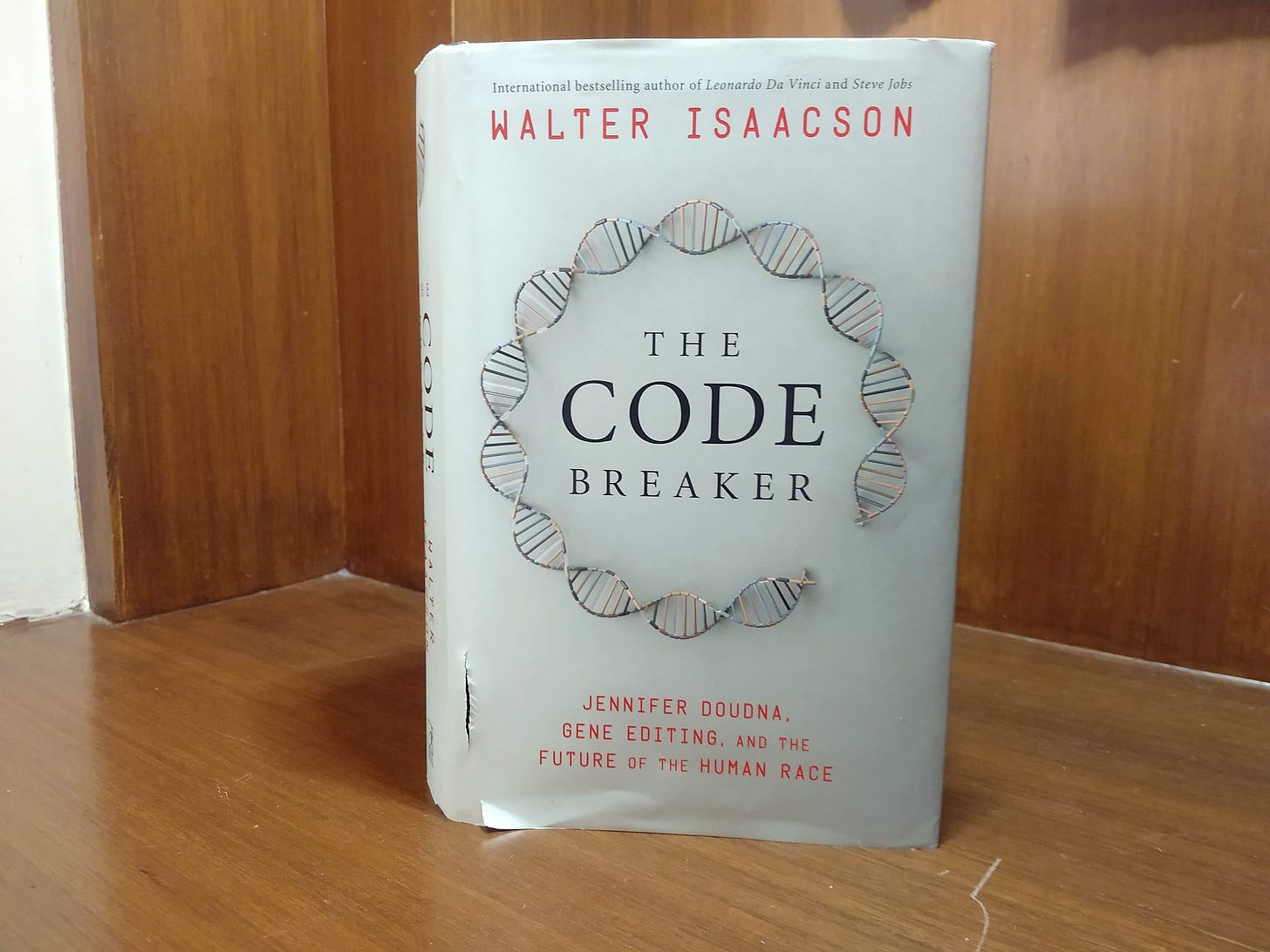The 20th century was a period of celebration of DNA-based research - discovery of its structure, sequencing of the human genome, the discovery of transposons, restriction enzymes (scissors for DNA), recombinant DNA technology and so much more. But the star of this century, atleast for the first half, is RNA. Research on biological mechanisms involving RNA and development of methods to apply those mechanisms in medicine made possible the creation of first-of-their-kind mRNA-based vaccines for COVID-19. And this research may soon result in prevention and cures for terrible genetic diseases such as Huntington’s and sickle-cell anemia.
The Code Breaker catalogues the rise of RNA’s importance - from a helper molecule in the process of protein formation from genes, to a gene-editing tool with wide-ranging and probably yet-unimagined applications in medicine. More importantly, it describes how the drive and passion of a few brilliant women and men takes humanity forward by leaps and bounds. I challenge you to not feel excited and hopeful for humanity when you read through The Code Breaker.
One of the most interesting themes in the book is the battle for recoginition between Dr. Doudna (and her colleagues) and competing scientists in the CRISPR space. Science moves forward through collaboration, but also through intense competition - to be recognized, and rewarded, for your contributions. Initially the author’s opinions seem partisan of Dr. Doudna, but as I read further, I realize the author has candidly stated where his judgement of the situation is in favor of a competing lab or scientist. This is no way detracts from Dr. Doudna’s achievements, but points to the fact that at different stages in the race different participants were ahead, and ultimately this wasn’t a race but a team sport.
I’m inclined to give weight to the author’s opinions because the ‘research’ the author put in to write this brilliant text is unequivocally evident. The author liberally mentions interviewing participants, attending conferences, dining with the distinguished scientists, trying his hand at gene editing experiments (!!) and gives a definite sense of the years and depth of his interaction with the CRISPR community. This was not a book written by reading articles and academic journals off the internet. The author is like an avid sports fan - attending events, taking notes, keeping statistics, understanding the technicalities of the sport, the dynamics between participants - and ultimately distilling his insights in a well-timed and beautifully written text. The celebration of Dr. Doudna’s contributions by the Nobel Prize committee came much later but the author must have had incredible foresight to be watching the drama unfold long before it commanded global attention.
It is rare for a book to spawn ideas, excitement and hope in the reader. I’m once again reminded - an account of the the brilliance of humans and wonders of nature is far more inspiring than any motivational text I may read.


